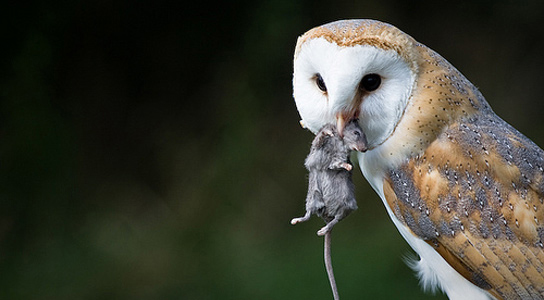Heavy Rains Brings Out Rodents And Potential Deadly Poisons For Other Wildlife

The following press release is courtesy of the California Department of Fish and Wildlife:
The winter of 2018-19 brought ample rainfall and snowpack—good news for drought-weary Californians. The bad news is that the vegetation growth that follows abundant rainfall can lead to abounding rodent populations that some people try to control with poisons. The California Department of Fish and Wildlife (CDFW) reminds people that rodenticides can also kill non-target wildlife, and even pets and children.
Most populations of native rodents, like voles, deer mice and squirrels, are kept in check by predators such as raptors and snakes. An important part of the natural food web, native rodent populations drop back to normal levels after a population boom due to increased predation and the return to typical food supplies. In the short term, to keep native rodent species from overwhelming your home and garden, use habitat modification as an effective, safe and inexpensive way to reduce the number of native voles, deer mice and squirrels on your property. For example, voles like tall grass for cover. Mowing your grass to no more than two inches tall makes it less appealing to them. Like most animals, rodents go where food is available and they feel safe. The easiest way to discourage rodents, both native and non-native, in and around homes and businesses is to remove or modify anything that could make them comfortable.
Removing food and cover is the first step to controlling rodents. Any attempt to remove rodents will be ineffective if you do not first take away their food and cover – other rodents will replace the ones you remove. These actions will help:
- Keep your home and yard neat and clean.
- Be aware that pet food, chicken feed and bird feeders will attract rodents.
- Remove objects and plants that rodents can hide under, such as wood piles, debris, construction waste, dense vegetation and ground-covering vines like ivy.
- Pick up fruit that has fallen from trees as soon as possible.
- Secure your garbage in a tightly sealed can.
- Seal water leaks and remove standing water that may attract unwelcome animals. Standing water is also where mosquitoes breed.
Target non-native rodents (house mice, Norway rats and black rats) in your home attic, walls or garage, by setting traps in secluded areas where the rats or mice have been seen or are likely to travel: close to walls, in dark corners, behind objects, on ledges, shelves, pipes and rafters. In areas where children, pets, birds or other non-target wildlife might have access, secure the trap inside a small box or other barrier for their safety. Check traps daily and wear disposable gloves when removing rodents. Place dead rodents in a sealed plastic bag and then into your garbage bin for weekly collection. Wash your hands after handling traps or rodents, even when using gloves.
Seal the places where rodents can get into your buildings: openings where cables, wires and pipes enter buildings, and cracks or holes in the foundation, walls and roofs. Non-native house mice can squeeze into holes as narrow as ½ inch diameter. Use hardware mesh and concrete, plaster or metal whenever possible. At the very least, stuff stainless steel or copper pot scrubbers, or copper mesh wool into the spaces behind the openings and fix it in place with expanding foam. These items can be purchased online and at hardware and dollar stores. You can also find pest control businesses that specialize in rodent-proofing homes and businesses.
Next, let nature help you control both native and non-native rodents around your home. Rodents’ natural predators include raptors such as owls and hawks. If you actively protect them and their habitat, you won’t need to spend money on poisons and put wildlife, pets and children at risk of accidental poisoning. Planting tall trees like conifers and pines that raptors favor will encourage these birds of prey to hang around your yard and remove rodents for you.
Most raptors use the same nest for many years and some even pass from one generation to the next. Raptors like Cooper’s hawks, red-shouldered hawks, white-tailed kites, great horned owls and barn owls often nest in or adjacent to residential areas and will gladly feed on rodents. That makes them excellent long-term controllers of rodent populations in the area near the nest.
During the breeding season, a family of five barn owls can eat as many as 3,000 rodents! You can encourage them by hanging a nest box on your property, but only if you and your neighbors are not using anticoagulant rodenticides. Remember that poisoned rodents can poison the predators, scavengers and pets that eat them!
Despite some restrictions on the most toxic and persistent anticoagulant rodenticides, wildlife are still being poisoned. In addition to the raptors, scavenging animals such as turkey vultures, coyotes, foxes, bobcats, bears and even feral cats and dogs can be poisoned by eating a smaller animal that ate rat poison. More than 90 percent of mountain lion carcasses collected by CDFW in 2016 and 2017 tested positive for anticoagulant rodenticides and most had been exposed to three or more different anticoagulants.
You can protect non-target animals and children from rodenticide poisoning by using sanitation, exclusion, traps and nature’s rodent predators to control rodents at your home or business. For more information, please visit the rodenticides page on CDFW’s website.



